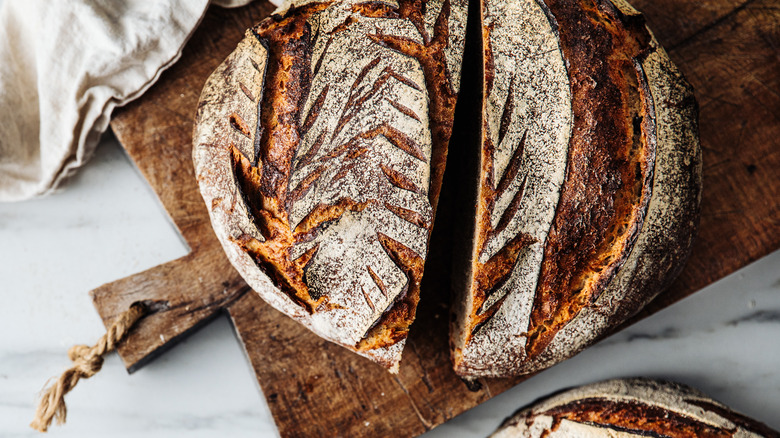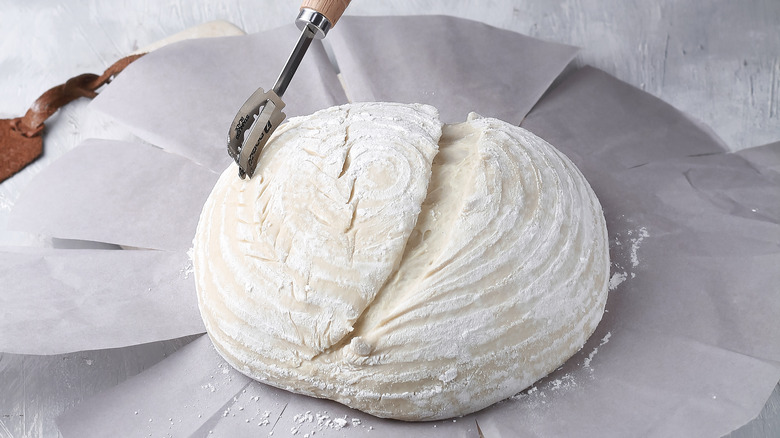How, Exactly, Do You Score Sourdough Bread?
Whether you're a novice or seasoned baker, scoring matters when it comes to making sourdough. Just like you'll see in this rustic sourdough bread recipe, scoring sourdough is a critical step not only because it adds an artistic touch, but also because it's a key factor in maintaining your loaf's integrity while baking. Your sourdough will expand in the oven, and by scoring your loaf in advance, you're intentionally directing where gas releases from the crust, which will prevent it from cracking.
So how, exactly, do you score like a pro? First, you'll need to prep your loaf. You'll want to have a bread lame (the most common tool used for scoring) or a very sharp knife; a razor blade or pair of kitchen scissors will also work if a lame is not available. You'll also want a fine mesh sieve and some baking flour for dusting. Begin by placing your proofed dough onto a flat surface such as a cutting board or piece of parchment paper, and use your fine mesh sieve filled with baking flour to lightly coat your loaf. This flour dusting will deliver a contrast of color and texture between your baked crust and the rest of your loaf.
Now, you're ready to make your scores. The basic technique requires using your sharp tool to make scores in your dough that are ½ inch to 1 inch deep. No matter which score style you're executing, aim to cut through the dough's skin without disrupting its overall structure.
Exploring the different scoring techniques
As you execute your primary score, note that different loaf shapes work better with different types of scores. For example, if your loaf is oval or bâtard-shaped, a crescent-style score will deliver an elegant final product. To create a crescent score, position your blade at a 45-degree angle, and then, starting at the top of your loaf, make a "C" shape in your dough (representative of a wide crescent shape). Conversely, if your dough is circular, you can opt for a square score. To do so, you'll want to create four tiny holes, one in each corner of your dough. Then, use your blade to execute four lines that connect the dots into a square shape.
Once you've made your primary score, you can take creative liberties with a secondary score. Unlike your initial score, a secondary cut is for aesthetics and design, and it should be no deeper than ½ inch. There are multiple secondary score designs to explore, including a wheat stalk, a snowflake, a center cross, or many small cuts that form unique patterns.
Ultimately, no matter which score you select, remember to use precision and form to guide your primary score, and then create art with your secondary score (pending you still adhere to the proper method and depth). Remember, there are multiple different types of sourdough to explore, and no loaf is created equal — so learn how you should be storing your sourdough starter, start experimenting, and enjoy the process!

